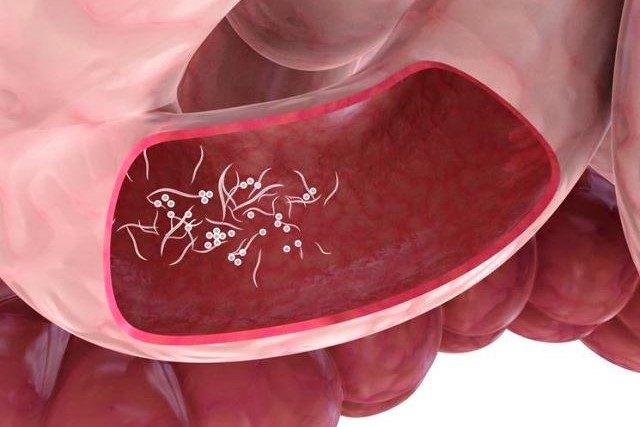
Pinworms infestation: how to treat a paediatric patient with enterobiasis (oxyuriasis)
Enterobiasis is an intestinal infestation of Enterobius vermicularis pinworms, usually in children, but adult family members and carers, institutionalised persons and those who have had oral-anal contact with an infected partner during sexual intercourse are also at risk
The main symptom is perianal itching.
Diagnosis is based on visual identification of threadworms in the perianal area or scotch-test for egg identification.
CHILD CARE PROFESSIONALS IN NETWOK: VISIT THE MEDICHILD STAND AT EMERGENCY EXPO
Oxides: therapy is based on mebendazole, pyrantel pamoate or albendazole
Up to one billion people worldwide from all socio-economic classes are infected.
Pinworm infestation is the most common helminth infection in the United States, occurring in about 20-42 million people.
Most cases occur in school-age children and young children, their families, or caregivers.
Pathophysiology of pinworms infestation
The eggs of pinworms become infective within a few hours of reaching the perineum.
Infestation usually occurs by transfer of the parasite eggs from the anal region to vehicles (clothing, bedding, furniture, blankets, toys, toilet seats), from which the eggs are passed to a new host, brought to the mouth and swallowed.
Thumb sucking is a risk factor.
Re-infestation (self-infestation) can easily occur through contaminated fingers carrying eggs from the perianal region to the mouth.
Infestations of pinworms have also been attributed to the practice of anilingus among adults.
Pinworms reach maturity in the lower gastrointestinal tract in 2-6 weeks.
The female worm migrates out of the anus to the perianal region (usually at night) and deposits eggs.
The movements of the female worm and the viscous gelatinous substance in which she deposits her eggs cause perianal itching.
Eggs can survive on vehicles for 3 weeks at normal household temperatures.
Symptomatology of pinworms infestation
Most infested persons have no symptoms or signs, but some have perianal itching and develop perianal scratching lesions.
Secondary bacterial infections may develop in the skin.
Rarely, migrating females ascend the female genital tract, causing vaginitis and, even less commonly, peritoneal lesions.
Many other conditions (e.g. abdominal pain, insomnia, convulsions) have been attributed to pinworm infestation, but a causal relationship is unlikely.
In some forms of appendicitis, pinworms have been found obstructing the appendicular lumen, but the presence of the parasites may be coincidental.
Diagnosis of pinworms infestation
- Examination of the perianal region for worms, eggs, or both
A pinworm infestation can be diagnosed by looking for the female worm, which is 8 to 13 mm in length (males are 2 to 5 mm), in the perianal region 1 to 2 h after the child has been put to bed or in the morning, or by using the microscope to identify eggs in the scotch test.
Samples are obtained early in the morning before the child gets up by touching the perianal folds with a strip of adhesive tape, which is placed with the adhesive side on a slide and examined under the microscope.
The 30 x 50 micron eggs are oval, with a thin shell containing a coiled larva.
A drop of toluene placed between the strip and the slide dissolves the adhesive and removes air bubbles under the strip that may prevent identification of the eggs.
This procedure should be repeated for 3 successive mornings if necessary.
Sometimes, the diagnosis can be made by examining samples taken from under the patient’s fingernails.
Eggs can also be found, but less frequently, in faeces, urine or vaginal smear.
Treatment of pinworm infestation
- Mebendazole, pyrantel pamoate or albendazole
Since pinworm infestation is rarely harmful, prevalence is high and re-infestation is frequent, treatment is only indicated for symptomatic infections.
However, most parents require treatment when their child has pinworm disease.
A single dose of one of the following, repeated after 2 weeks, is effective in eradicating pinworms (but not eggs) in > 90% of cases:
- Mebendazole 100 mg orally (irrespective of age)
- Pyrantel pamoate 11 mg/kg (maximum dose of 1 g) orally (available as an over-the-counter medicine)
- Albendazole 400 mg orally
Carbinated vaseline preparations (i.e., containing carbolic acid) or other anti-itch creams or ointments applied locally to the perianal region may relieve itching.
Prevention of infestation
Re-infestation with pinworms is frequent, because viable eggs can be eliminated up to 1 week after treatment, and because eggs deposited in the environment before treatment can survive 3 weeks.
Multiple infestations among family members are common and treatment of the whole household may be necessary.
The following can help prevent the spread of pinworms:
- Wash hands with warm, soapy water after using the toilet, after changing nappies, and before touching food (the most effective way)
- Wash clothes, bedding and toys frequently.
- If people are infected, shower every morning to help remove eggs on the skin
- Vacuum the environment to try and remove the eggs
- Avoid oral-anal contact during sex in adults
Read Also:
Raising The Bar For Pediatric Trauma Care: Analysis And Solutions In The US
Stroke, Italian Society Of Paediatrics: It Can Also Affect Children From Perinatal Age



